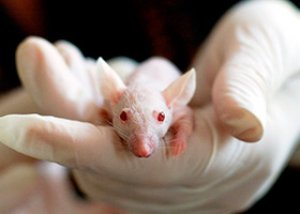
All iLive content is medically reviewed or fact checked to ensure as much factual accuracy as possible.
We have strict sourcing guidelines and only link to reputable media sites, academic research institutions and, whenever possible, medically peer reviewed studies. Note that the numbers in parentheses ([1], [2], etc.) are clickable links to these studies.
If you feel that any of our content is inaccurate, out-of-date, or otherwise questionable, please select it and press Ctrl + Enter.
Scientists have managed to grow part of a human kidney in a rodent's body
Last reviewed: 02.07.2025
 ">
">Using stem cells leads to new discoveries. Recently, scientists managed to transform human stem cells into nephrons directly in the body of rodents. The resulting nephrons filtered blood in the same way as a healthy kidney normally does.
Recently, scientists have been sharing information about growing organoids – unique mini-organs (or parts of organs) that are grown in the laboratory using the latest technology. Attempts have already been made to grow elements of the pancreas, intestinal epithelium, a micro-section of the stomach, and even a part of the brain tissue. The resulting mini-organs have a complex structure that closely resembles the structure of a real organ. They are quite capable of performing the same function.
Specialists from the University of Manchester were able to grow a part of a human kidney in a similar way. This part was a nephron – a unit of kidney structure and functionality.
The nephron filters “excess” substances and moisture from the blood, after which it gives the components necessary for the body and some water back into the bloodstream. As a result, saturated urine is formed. The nephron looks like a ball with branches – this is the so-called glomerulus, which is a capillary cluster in the epithelial capsule.
The nephron is a fairly complex element, but scientists were still able to recreate it in the laboratory. Human stem cells, namely pluripotent cells capable of transforming into other cellular structures, were used as building material. Scientists added special molecules to the nutrient media that incline the development of cells towards nephrons. For more compact cellular growth, the material was kept in a gel-like mass: this had to be done so that further transplantation to rodents would be easier.
After a certain period of time, the gel with cells was injected subcutaneously into the rodents. After three months, the mice were found to have full-fledged nephrons that functioned no worse than real ones.
Of course, the number of nephrons obtained was relatively small: only a couple of hundred (and a normal kidney contains about a million). Moreover, the inclusion of the mini-organ in the vascular network of the mice was somewhat different from that of a normal kidney, and the mini-kidney did not have a urinary system.
But scientists did not set a goal to recreate a full-fledged urinary organ. The main thing is the very fact of creating a structural renal component that performs its function. Such an element can be used to study the functioning of the kidney in the natural environment.
In addition, it can be assumed that in the future, specialists will continue experiments. Probably, over time, it will be possible to artificially grow healthy organs for patients suffering from diseases of the urinary organs.
The study is described in the pages of the Stem Cell Reports publication.

 [
[